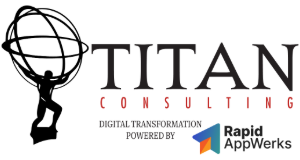SAP Master Data
Filter By
Browse By
- SAP Analytics and AI
- SAP Application Development and Integration
- All SAP Application Development and Integration
- SAP ABAP
- SAP ABAP Development Tools
- SAP ABAP Test Cockpit
- SAP API Management
- SAP BAPI
- SAP Basis
- SAP BRF
- SAP Business Application Studio
- SAP CMS
- SAP Design Studio
- SAP Development Tools
- SAP DevOps
- SAP EAI
- SAP EDI
- SAP Extension Suite
- SAP Fiori
- SAP Fiori Elements
- SAP Integration Suite
- SAP Low Code Application Development
- SAP Low Code Automation
- SAP Netweaver
- SAP Release Management
- SAP UI5
- SAP Web Application Server
- SAP Web IDE
- SAP Business Process Management
- SAP Center of Excellence
- SAP CIO
- SAP Customer Experience
- SAP Data and Data Management
- All SAP Data and Data Management
- SAP BW
- SAP BW/4HANA
- SAP Crystal Reports
- SAP Data Archiving
- SAP Data Center
- SAP Data Governance
- SAP Data Integration
- SAP Data Migration
- SAP Data Quality
- SAP Data Services
- SAP Data Strategy
- SAP Data Visualization
- SAP Data Warehouse Cloud
- SAP DMS
- SAP Document Control
- SAP EIM
- SAP ETL
- SAP ETL Tools
- SAP HANA
- SAP HANA Administration
- SAP HANA Deployment Infrastructure
- SAP HANA Studio
- SAP Master Data
- SAP Master Data Governance
- SAP MDM
- SAP Enterprise Architect
- SAP Enterprise Asset Management
- SAP ERP
- SAP Finance
- All SAP Finance
- SAP Accounting
- SAP AR AP
- SAP Asset Accounting
- SAP Billing Systems
- SAP BPC
- SAP BRIM
- SAP Cash Management
- SAP Central Finance
- SAP Controlling
- SAP COPA
- SAP Cost Center Accounting
- SAP Currency Risk
- SAP e-invoicing
- SAP FICO
- SAP Finance Automation
- SAP Advanced Financial Closing
- SAP Financial Consolidation
- SAP Financial Planning
- SAP FX Risk
- SAP General Ledger
- SAP Global Tax Management
- SAP Hyperion
- SAP Order to Cash
- SAP Payment Processing
- SAP Profitability Analysis
- SAP Rebate Management
- SAP S/4HANA Finance
- SAP SWIFT Compliance
- SAP Treasury Management
- SAP Universal Journal
- SAP Governance Risk and Compliance
- SAP Human Capital Management
- SAP Intelligent Technologies
- SAP Platform and Technology
- All SAP Platform and Technology
- SAP Business Technology Platform
- SAP Cloud
- SAP Cloud Connector
- SAP Cloud Integration Platform
- SAP Cloud Migration
- SAP Cloud Platform
- SAP Cloud Providers
- SAP Cloud Strategy
- SAP Digital Signature
- SAP Container Platform
- SAP HANA Enterprise Cloud
- SAP Digital Asset Management
- SAP Smart Forms
- SAP HEC
- SAP Digital Integration Hub
- SAP Hyperscalers
- SAP Infrastructure
- SAP Messaging
- SAP Quality and Testing
- SAP Security
- SAP Spend Management
- SAP Supply Chain Management
- All SAP Supply Chain Management
- SAP APO
- SAP Asset Management
- SAP Business Network
- SAP Digital Manufacturing Cloud
- SAP Digital Twin
- SAP EWM
- SAP IBP
- SAP Inventory Management
- SAP Label Printing
- SAP Logistics
- SAP Manufacturing
- SAP Manufacturing Automation
- SAP MES
- SAP MII
- SAP MM
- SAP MRO
- SAP MRP
- SAP Order Management
- SAP Plant Maintenance
- SAP PLM
- SAP Production Planning
- SAP S&OP
- SAP SD
- SAP SPM
- SAP Supply Chain Planning
- SAP Track and Trace
- SAP Transportation Management
- SAP System Administration
SAP Master Data – Foundation of Data Analytics
Nobody notices a home’s foundation. A good home foundation will not make its presence known, whereas a poor foundation will manifest itself in continued problems – in cracks in walls, uneven floors, doors that won’t shut, gaps in windows, and so on!
Master data is very much like the home foundation. Nobody notices master data when it is good. When it is poor, it shows up in every business process – painfully! Every employee, customer, and vendor feel the pain of not having company-wide, reliable, well-maintained, easily updated, secure and compliant master data.
SAP Master Data – Foundation of Data Analytics
Nobody notices a home’s foundation. A good home foundation will not make its presence known, whereas a poor foundation will manifest itself in continued problems – in cracks in walls, uneven floors, doors that won’t shut, gaps in windows, and so on!
Master data is very much like the home foundation. Nobody notices master data when it is good. When it is poor, it shows up in every business process – painfully! Every employee, customer, and vendor feel the pain of not having company-wide, reliable, well-maintained, easily updated, secure and compliant master data.
In an era where data analytics drives the revenue bus for all companies, a reliable single source of truth of company data is mandatory. Without this foundational truth, all analytics are garbage-in, garbage-out leading to sub-standard decisions and immense amount of frustration.
There are several huge advantages in having reliable and comprehensive master data in all the relevant domains – vendor, customer, materials/products, employee, etc.
- Efficient business processes
- Reduced time to market
- Faster and better data analytics
- Better compliance
- Reduced workload
Yet, SAP master data has become a highly challenging asset to maintain for many reasons – a SAP+third-party applications model, legacy applications, global footprint, compliance constraints, and finally, the increasing multi-cloud, hybrid deployment models.
Once upon a time, SAP was a monolith in many companies, and it was possible to maintain one-source for master data. However, with the proliferation of solutions around SAP, master data is strewn across the company within SAP and non-SAP systems. With complex business processes and supply chains that cut across internal and even vendor, partner or customer systems, master data becomes very difficult to maintain and govern. Vendors such as Laidon solve this with a low-code, prebuilt master data governance solution on the cloud. SimpleMDG’s streamlined user interface retrieves real-time ERP master data and initiates maintenance requests for all CRUD (Create, Read, Update and Delete) processes.
Companies with legacy systems also struggle to migrate their old master data to new systems – the complexity, the costs and the business risks pose difficult hurdles.
Some significant problems in today’s master data involve duplication – lack of proper tools to validate and prevent duplications, lack of well-defined, unique ids and disparate systems make it very easy to generate duplications. Vendors such as Winshuttle enable automation to solve duplication challenges.
Compliance and security are additional complexities today with cloud-based data stores, especially with compliance requirements on who can access personal customer data, where it can be stored and how it should be archived. Governance is the key as this article outlines.
SAP’s own MDM solution with its governance module also continues to provide robust functionality.
883 results
-

 Premium
Premium
Improve Your Authorization Concept by Deriving Roles in Enterprise Role Management
Reading time: 12 mins
Enterprise Role Management (ERM) helps your role design process with a predefined, customizable design methodology that guides you through role definition, authorization maintenance, risk analysis, role approval, and role generation in your SAP back-end systems. During role maintenance, you can manage massive role derivation and adopt a mapping for speeding up this process. Key Concept...…
-

 Premium
Premium
An Easy Way to Create Custom Services in ESS
Reading time: 11 mins
You can create new services for users in Employee Self-Service (ESS) without special skills in Flow Logic, HTML, JavaScript, or Java. Key Concept Employee Self-Service (ESS) is designed for non-professional users who do not access the HR system via a SAP GUI installed on their PC, but via a Web browser. SAP delivers a variety...…
-

 Premium
Premium
Prevent Unauthorized Changes to Historical Time Master Data
Reading time: 6 mins
Using these simple steps, learn how to prevent unauthorized users from making changes to historical time master data. Once an employee enters time data and an employee’s manager or time administrator approves the submission, it is important that the employee can’t make any additional changes to those hours. Key Concept The Report for Time Leveling...…
-
-

 Premium
Premium
Overcome Four Common Challenges of a Product Data Consolidation Project
Reading time: 10 mins
ManagementMoving product data into a central repository reduces redundant labor and increases the speed at which your company can respond to price requests from customers. This case study follows an automotive parts supplier as it builds a foundation for flexible price quoting with a product data management system. To run efficiently, cars rely on an...…
-

 Premium
Premium
APO Industry Solutions: Extensions for Auto and Retail
Reading time: 12 mins
SAP’s Advanced Planning and Optimization (APO) solution offers 10 extensions for six industries: Mill (Paper, Metal), Chemical/Process, Auto, Retail, Cable, and Defense. In this article, I discuss industry extensions for the retail and auto industries. Key Concept Advanced Planning and Optimization (APO) industry solutions are industry-specific extensions that are integrated with SAP’s core ERP Central...…
-

 Premium
Premium
3 Approaches to Create Global Ad-Hoc Queries
Reading time: 13 mins
Learn the details on how you can transport user-defined ad-hoc reports from development to quality to production in your SAP ERP HCM implementation. Follow this process when you want certain reports (queries) transported and available to all users in all environments. For example, this approach is useful if you create a report in ad-hoc, but...…
-

 Premium
Premium
SAP APO and the Bentley Continental GT: Communicating with a Common Frame of Reference
Reading time: 24 mins
Use this detailed summary of SAP Advanced Planning and Optimization as an effective tool for explaining its concepts to coworkers and partners with less experience with the system. Key Concept Most experts in SAP Advanced Planning and Optimization (SAP APO) became experts the hard way – through hard work, learning from the bottom up, and...…
-
-

 Premium
Premium
Use Global ATP to Trigger Time-Based Location Substitution in a Consolidation Environment
Reading time: 14 mins
Learn how to implement time-based location substitution using rules-based Available-to-Promise (ATP) in a consolidation scenario. An example from the chemical industry demonstrates how to set this up. Key Concept Inclusive rule strategies are used to determine the domain of products and the location substitutions that are possible based on the rules defined within the inclusive...…
-

 Premium
Premium
Get More Detail About the Value of Stock with Split Valuation
Reading time: 8 mins
A real-life example illustrates the concept and necessary settings for split valuation based on the origin of the product. Key Concept Split valuation is a function in SAP R/3 and mySAP ERP Central Component that allows you to value stock for a product based on different attributes – for example, the origin of the product...…
-

- SAP Procurement
 Premium
Premium
An Analysis of Simplified Sourcing on SAP S/4HANA
Reading time: 11 mins
Learn the differences between the material requirements planning (MRP) source of supply determination in SAP ERP and the simplified sourcing logic introduced in SAP S/4HANA. Key Concept Source of determination is the process of selecting a source of supply. This process can be executed by material requirements planning (MRP) when a replenishment proposal is created....…
Become a Member
Unlimited access to thousands of resources for SAP-specific expertise that can only be found here.
Become a Partner
Access exclusive SAP insights, expert marketing strategies, and high-value services including research reports, webinars, and buyers' guides, all designed to boost your campaign ROI by up to 50% within the SAP ecosystem.
Upcoming Events
Related Vendors
Your request has been successfully sent



